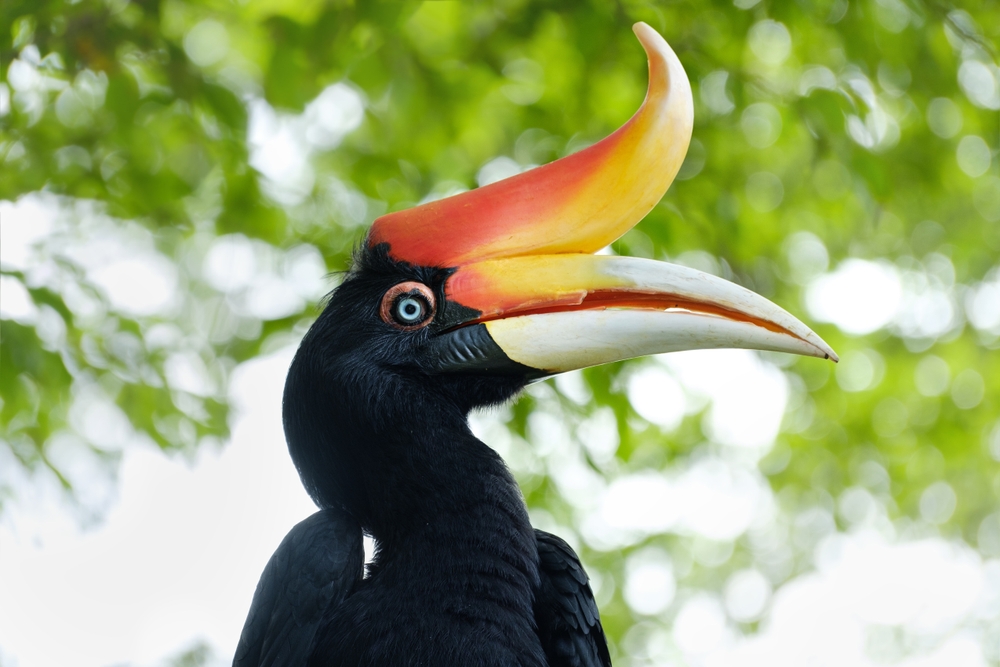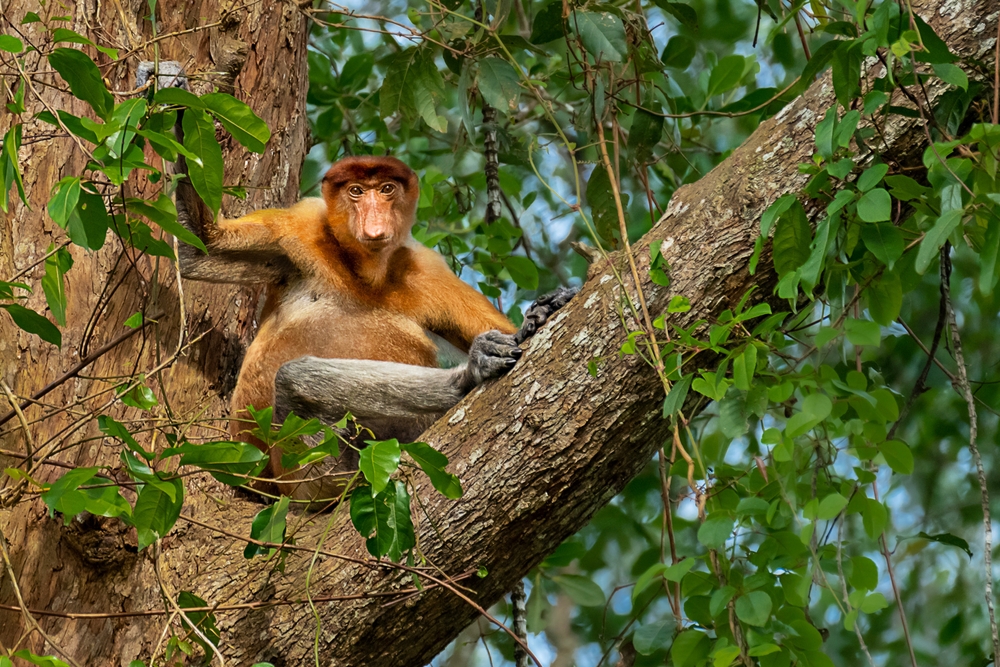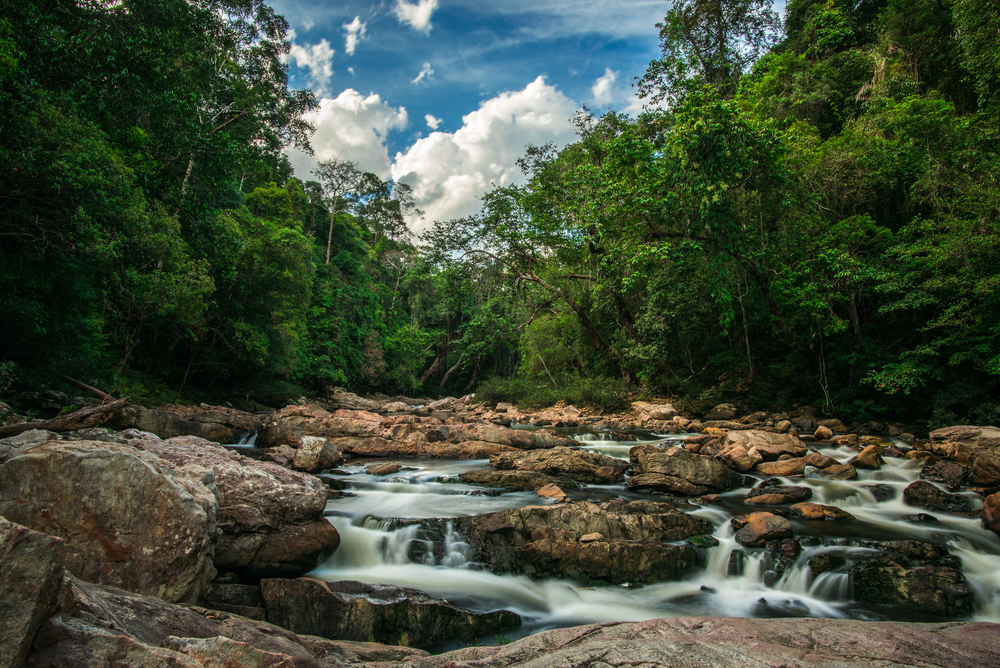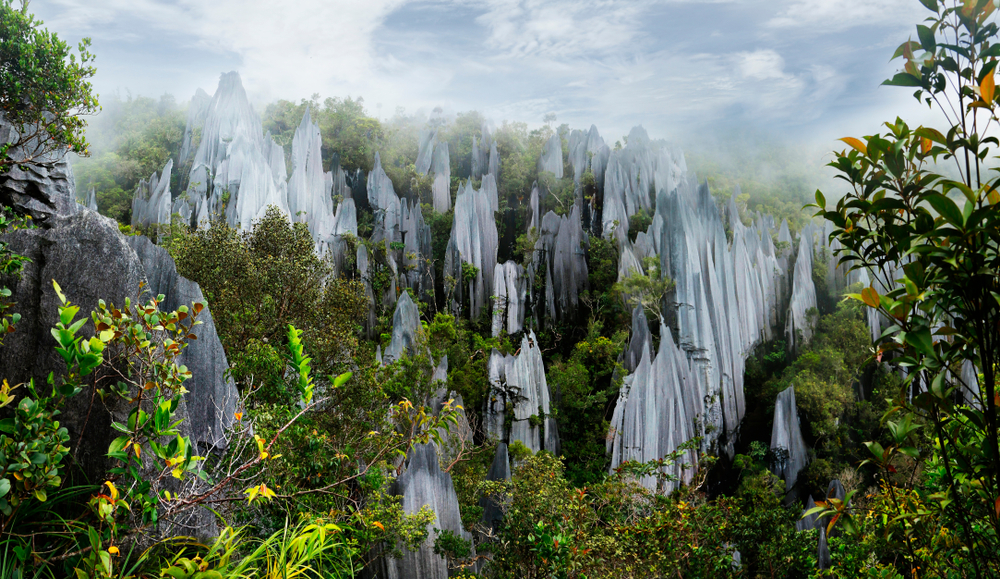Bukit Tiban Overview
Bukit Tiban National Park, known locally as Taman Negara Bukit Tiban, is a captivating nature reserve in Sarawak, Malaysia, on the island of Borneo. Spanning approximately 82 square miles (213 square kilometers), this park is nestled within the tropical lowlands and is part of the globally significant Borneo rainforests.
Its location near the coast in northern Sarawak provides a vital ecological corridor, linking forested landscapes and coastal ecosystems. Bukit Tiban is especially notable for its role in protecting primary and secondary rainforests, which are increasingly rare in this part of the world.
The terrain of Bukit Tiban National Park is characterized by rolling hills, rugged ridges, and dense lowland rainforest. The park’s namesake, Bukit Tiban, is a prominent hill covered with lush, green vegetation, rising above the surrounding lowlands. Its landscape includes rivers that meander through the forest, creating wetland habitats crucial for biodiversity.
Swamp forests, peatlands, and areas of mixed dipterocarp trees dominate the vegetation, with towering trees, thick undergrowth, and climbing vines creating a multi-layered canopy that supports rich biodiversity. Some of the iconic tree species found here include the Shorea and Dipterocarpus, which are important not only for their ecological value but also for their role in carbon storage.
Bukit Tiban is a sanctuary for a variety of wildlife, offering opportunities to encounter rare and endangered species. Mammals such as the Bornean orangutan (Pongo pygmaeus), the Malayan sun bear (Helarctos malayanus), and clouded leopards (Neofelis diardi) can be found within its dense forest.
The park is also home to a wealth of birdlife, making it a haven for birdwatchers. Species such as hornbills, kingfishers, and pittas are commonly spotted. The rare rhinoceros hornbill (Buceros rhinoceros), with its striking appearance, is one of the park’s iconic avian residents. Reptiles, amphibians, and an array of insects further enrich its ecological diversity.
Popular features of the park include its pristine rainforest trails, which offer visitors a chance to immerse themselves in the beauty of Borneo’s untouched wilderness. The scenic hilltops provide panoramic views of the surrounding forest, while rivers and waterfalls offer tranquil spots for exploration and relaxation. Wildlife observation, nature photography, and guided eco-tours are among the most rewarding activities for visitors. The park’s remoteness enhances its appeal, offering an off-the-beaten-path experience for adventurers and nature enthusiasts.
Bukit Tiban National Park faces several conservation challenges, including the pressures of deforestation, illegal logging, and habitat fragmentation. However, concerted efforts by the Sarawak Forestry Corporation and local communities have led to significant conservation successes. The park plays a critical role in protecting endemic species and serves as a buffer against the environmental impacts of nearby plantations and development projects. Continuous initiatives aim to bolster its biodiversity, preserve its ecosystems, and educate visitors about sustainable practices.
















































































